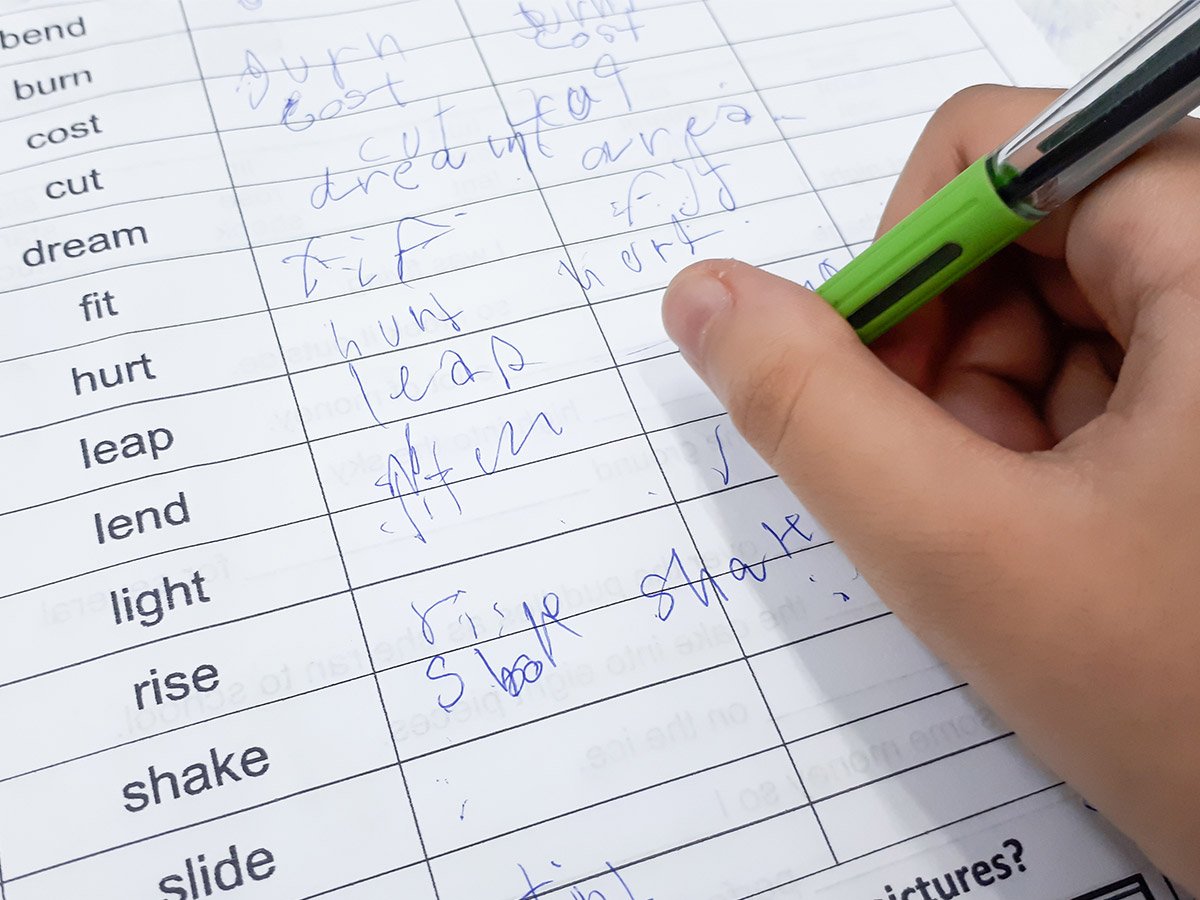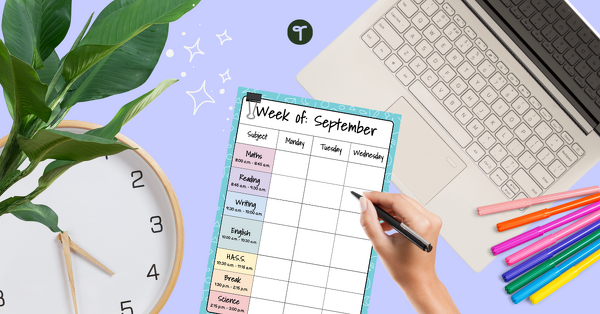With all the buzz words floating around these days, it’s easy to get confused when it comes to the different learning conditions and how to support them. So, it wouldn’t surprise me at all if you read the headline of this blog and said to yourself…what is dysgraphia, exactly?
As with all conditions that affect learning, it’s important that teachers understand and support dysgraphia as best we can. This blog is packed full of information to help you break down exactly what this learning difficulty is and how you can best help diagnosed students become successful in the classroom.
What is Dysgraphia?
Dysgraphia is a neurological condition which can affect written expression and fine motor.
Not to be confused with similarly-sounding dyslexia, dysgraphia affects a person’s ability to organise and express thoughts and ideas in written form.
Writing is more than just putting pen to paper! Your brain needs to compute a complex set of instructions to process language in your mind, and then send those messages to your muscles in your hand and out on to the page, letter by letter.
Dysgraphia: from dys- ‘difficult’ + Greek -graphia ‘writing’.

wk1003mike/shutterstock.com
The physical act of writing can often be frustrating for students with dysgraphia. They can sometimes find it difficult to demonstrate their understanding in pieces of written work.
Generally appearing when children are first learning to write, dysgraphia is a life-long condition for which there is no cure. However, people with dysgraphia often learn ways to manage their condition and become successful at writing and other language-based activities with support and early intervention.
Signs of Dysgraphia
When you’re a teacher, you come across a range of learning needs and behaviours. Of course, we all know that only a licensed educational psychologist can diagnose a condition! It’s incredibly important not to jump the gun and assume you know what condition a child is exhibiting. Have a chat with your school’s special education teachers or learning support teachers before conferencing with the parents and encouraging them to seek a professional opinion.
While you are doing this, it often pays to be aware of the signs of different conditions so that you can intervene early on and support families while they seek a diagnosis.
Dysgraphia can be either language-based or non-language-based. Because of the complexity of the processes involved with writing, the signs and symptoms of each type of dysgraphia can be varied.
Language-Based
Students with language-based dysgraphia may have difficulties with:
- converting phonemes into graphemes
- knowing alternative graphemes to use for similar sounds (for example f, ff or ph)
- writing letters neatly and facing in the right direction
- forming complete sentences with correct grammar and punctuation
- writing sentences with all the words in the correct order, with no words omitted or incomplete.

Veja/shutterstock.com
Non-Language-Based
Students with non-language-based dysgraphia generally have more difficulties with the fine-motor aspect of writing. The signs may include:
- illegible writing
- inconsistencies with the size of letters, spacing, upper and lower case and writing on the lines
- a cramped or unusual pencil grip
- a strange writing position.
Regardless of the type of dysgraphia, students more than likely will exhibit slower, more laboured writing, difficulties putting their thoughts on the page, and a large gap between their spoken and written knowledge.
Not surprisingly this can be incredibly frustrating for students and have quite a negative effect on their self-esteem and motivation. In order to help them be as successful as possible in the classroom, you will need to put in place strategies and modifications to accommodate their needs.
Supporting Dysgraphia in the Classroom
Messy, mistake-ridden work can be a teacher’s worst nightmare. When it comes to dysgraphia, however, it’s definitely not a case of a student being lazy or sloppy. It’s a sign that they are needing some help and support.
So, which strategies best support students with dysgraphia?
Writing Expectations
It goes without saying that your expectations of students with dysgraphia should differ greatly from the rest of your class when it comes to writing. This is not to say that your students should be exempt from writing altogether! Alternatively, make small modifications and adjustments when it comes to the student’s writing. This can make a big difference.
- Limiting the amount of time students are expected to write can make a difference to how quickly they ‘burn out’ while writing. Remember, their brains are working overtime to just put the words on the page in a sensible manner.
- Give students extra time for completing tasks, such as copying down notes, completing assessments or tests. This can help them relax and not feel so pressured, which in turn can help them think more clearly.
- Limit the amount of writing they need to do. Perhaps you can request a scribe for certain activities, pre-fill out their name and date on a worksheet, or provide typed copies of classroom notes.
- Make allowances for their style of writing. For example, if they find it easier to write in print, rather than cursive writing.
- Scaffold their writing. Provide them with a graphic organiser to help them organise their thoughts, or allow multiple drafts of an assessment to help them build confidence in their work.

wavebreakmedia/shutterstock.com
Physical Modifications
- Give them different methods of recording their ideas. Typing ideas out on a laptop or dictating answers to a scribe such as a teachers aide can help them express their understanding more clearly.
- Allow them to demonstrate their knowledge in other ways. Children with dysgraphia can record their ideas in ways that require little writing, such as a creating labelled diagram instead of an information report. Reciting spelling words instead of writing them down is another simple way to assess a child on their learning that doesn’t require writing.
- Try different paper and pens or pencils. A great example is paper with raised or different coloured lines or pre-drawn margins. This is a modification that can make a small, but meaningful difference.
- Allow release time for the student, as they may be required to visit an occupational therapist to work on their fine motor skills.
As with any neurological condition, each child is different, and what works for one won’t always work for another. It’s best to work closely with your student’s family, occupational therapist and doctor to ensure you are differentiating for them in the best way possible.
With your help, students with dysgraphia can feel strong in the classroom!
Do you know a child with dysgraphia? Share this information to help them be as successful as they can be.
Banner image: taniascamera/shutterstock.com







Comments